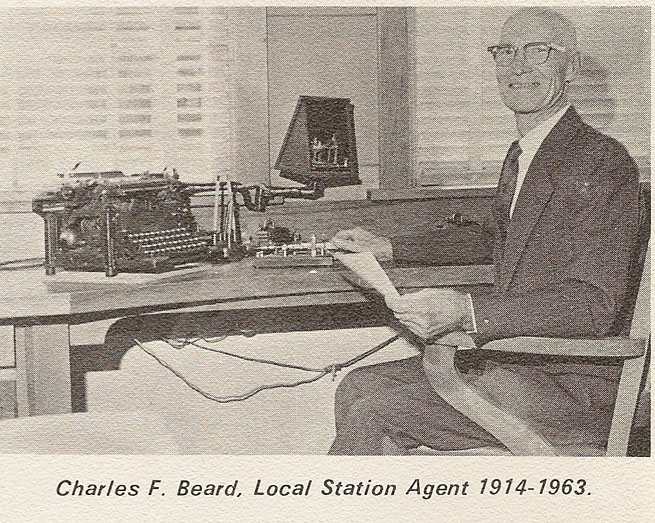|
Charles F. Beard, 82, started working for the M & St L
railroad in 1908 as a telegrapher. Prior to that time he was
employed as a railway clerk. For a number of years he was
top man on the company's seniority list of telegraphers.
During his 49 years as the Dallas Center agent he has observed the
two extremes in passenger service. In his opinion, rising
costs of transportation by rail, lower revenues, super highways
and fast cars were some of the contributing factors to
discontinuance of passenger trains through Dallas Center.
The income form mail and express was not great enough to offset
the loss in passenger fares. As of 1969, the mail is brought
to Dallas Center by truck, and the nearest express office is in
Adel. Due to the continuing heavy shipments of agricultural
products from the area, Mr. Beard feels that the freight service
by rail will continue for some time. Only one freight train
services Dallas Center daily on its route between terminal
stations at Des Moines and Ft. Dodge. |
 |